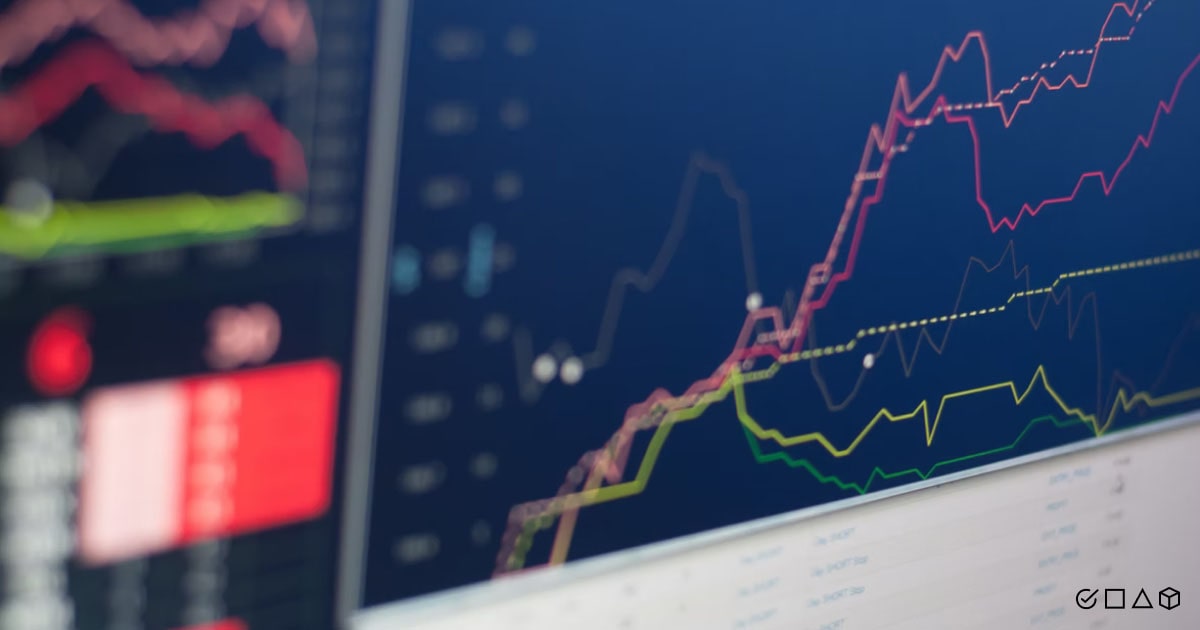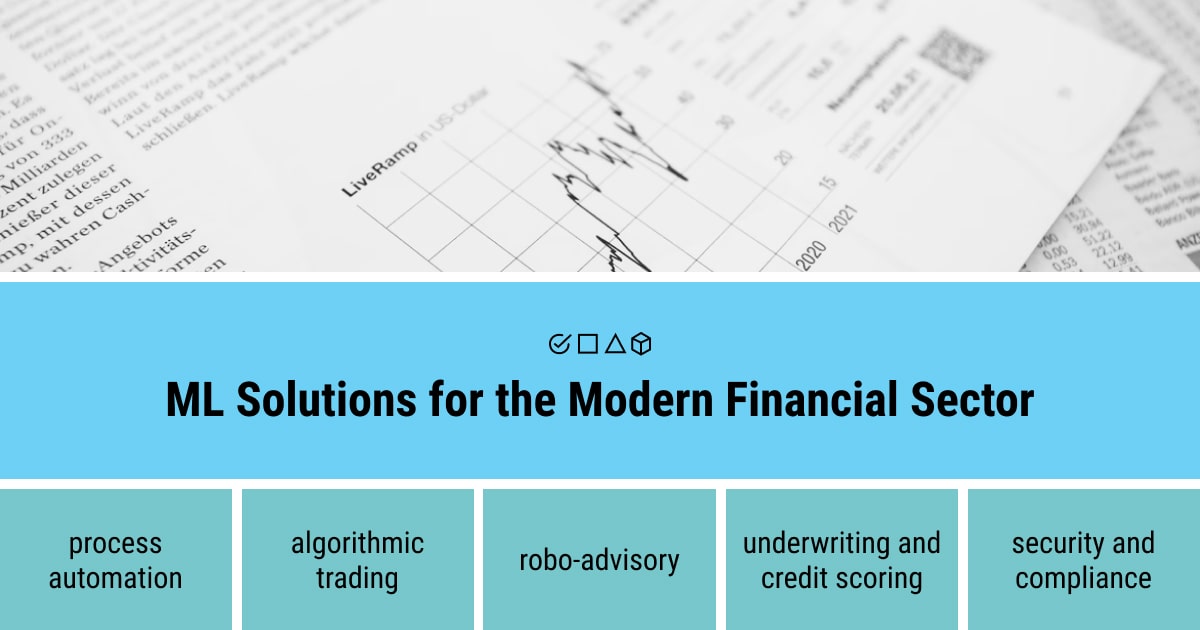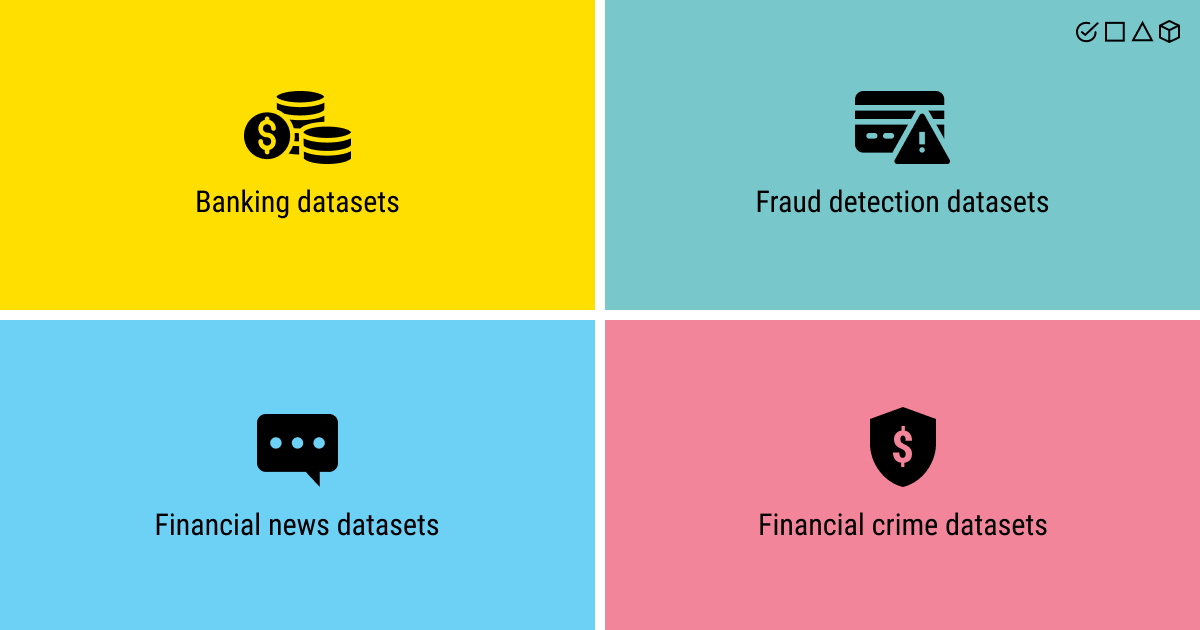Financial Datasets: Top Resources for ML Engineers (Free & Paid)

TL;DR
- Explore top free and paid finance dataset sources with direct use cases for your ML workflows.
- Find the right mix of traditional and alternative data, from stock prices to crypto, ESG metrics, and loan performance.
- Use built-in API options to automate real-time or historical data access without manual downloads.
- Know when public datasets are enough and when to build custom ones for niche, multimodal, or edge-case scenarios.
- Apply clear tips for handling missing data and labeling financial features to improve your model’s accuracy.
Top Financial Datasets for Machine Learning
As the financial sector evolves, accessing high-quality data is essential for training machine learning models. Financial datasets, combined with accurate data annotation, provide valuable information to drive predictive modeling, automate trading, detect fraud, and improve financial decision-making.
Yet, most ML teams don’t rely on a single source. While APIs like Quandl or Alpha Vantage cover pricing and macro data, SEC filings, earnings calls, and transcripts are often scraped or pulled through custom pipelines. Structured and unstructured financial data still require a mix of vendor tools and internal workarounds.
Historical consistency is crucial when selecting financial datasets for predictive modeling. Datasets must demonstrate reliability over time and have a proven track record of forecasting outcomes correctly. Regulatory compliance is also nonnegotiable to protect clients’ interests.
Here’s a list of the top platforms offering financial datasets for machine learning:
- Kaggle
- Quandl
- Data.gov
- World Bank Open Data
- IMF Data
- Financial Times/Markets Data
- Google Trends
- EU Open Data Portal
- American Economic Association (AEA)
- Global Financial Data (GDF)
Let’s delve into these platforms and what they offer.

Kaggle
Kaggle is a popular hub for data scientists and ML engineers looking for high-quality datasets. It features a variety of financial data, including stock prices, cryptocurrencies, loan predictions, and financial fraud detection datasets. You can also find datasets for cryptocurrency trends and loan default modeling on Kaggle.
The platform’s community shares valuable insights and solutions, making it easier for you to get started on projects. Kaggle’s financial data sets are diverse and continuously updated, giving you access to fresh information for your ML projects.
Top Kaggle financial datasets:
- Credit Card Fraud Detection: Training models to detect fraudulent transactions.
- Stock Market Data: Contains historical stock prices for building trading algorithms.
- Bitcoin Historical Data: Useful for analyzing cryptocurrency trends.
- Loan Default Prediction: Helps in modeling credit risk.
- Financial News Sentiment Analysis: Predicting market movements based on news sentiment.
Most datasets are available in CSV format and can be downloaded directly or accessed via Kaggle’s Python API.
Quandl
Quandl provides reliable financial and economic datasets, suitable for predictive modeling and research. It also offers access to ESG metrics, alternative financial indicators, and premium market data feeds. You can get both premium and free financial datasets, sourced from well-established financial institutions. The finance data covers various topics, including stock performance, commodity prices, real estate trends, and alternative metrics like social sentiment.
You can use Quandl’s data for algorithmic trading, economic forecasting, or quantitative research. Its high-quality, clean data helps you avoid spending too much time preparing data.
Top financial datasets available on Quandl:
- End-of-Day US Stock Prices: Data on daily stock prices from major exchanges.
- Global Futures Prices: Information on future contracts across various commodities.
- Housing Price Index: Historical data on real estate trends.
- Economic Indicators by Country: Covers GDP, inflation, and employment data.
- Oil Prices Data: Tracks the historical prices of crude oil and other energy sources.
Available via API in JSON, CSV, or Excel format depending on the provider. Free and premium access options available.
Data.gov
Data.gov is the U.S. government’s open data platform. You’ll find data on consumer spending, economic indicators, federal budgets, and more. The platform’s machine-readable data is valuable for financial modeling and policy analysis.
Updated regularly, Data.gov ensures that you work with the latest information available. Whether you’re doing research, building financial models, or analyzing economic trends, it’s a go-to source for public financial data sets.
Recommended financial data sets from Data.gov:
- Consumer Spending Data: Useful for understanding trends in consumer behavior.
- U.S. Federal Budget Data: Provides details on government spending and revenue.
- Unemployment Insurance Weekly Claims: Offers insights into job market trends.
- Bank Financial Reports: Includes information on the performance of U.S. banks.
- Federal Reserve Economic Data (FRED): Data on economic indicators like inflation and interest rates.
Most data is in machine-readable formats like CSV and JSON. Bulk download and API access are both supported.
World Bank Open Data
World Bank Open Data gives you access to a vast collection of global financial and development data. It includes economic indicators, poverty statistics, and country-specific financial metrics.
The data is highly useful for modeling economic forecasts and assessing risks. You can leverage it for credit risk analysis, economic development studies, or market predictions. It’s a must-have resource if your projects involve global financial or economic modeling.
Top datasets from World Bank Open Data:
- Global Financial Development Database: Information on financial institutions and markets.
- World Development Indicators: Comprehensive data on economic development and global growth.
- International Debt Statistics: Covers debt across developing countries.
- Doing Business Reports: Insights into the regulatory environment and ease of business.
- Poverty and Equity Database: Tracks trends in poverty and income distribution.
Accessible in CSV and XML formats with an API available for automated use.
IMF Data
IMF Data provides a range of financial statistics, focusing on global economic trends. You’ll find information on exchange rates, commodity prices, and government finances. It’s useful for macroeconomic analysis, financial stability assessments, and understanding the impact of international policies.
For ML projects, IMF Data can help you build models that predict economic outcomes or assess financial risks. Its international focus allows you to analyze trends across different countries.
Notable datasets from IMF Data:
- World Economic Outlook Database: Forecasts of global economic trends.
- International Financial Statistics (IFS): Includes data on exchange rates, GDP, and trade.
- Global Debt Database: Information on the debt levels of various countries.
- Currency Composition of Official Foreign Exchange Reserves (COFER): Tracks central banks' reserve holdings.
- Commodity Price Data: Covers prices of goods like metals, oil, and agricultural products.
Downloadable in CSV and XML formats. Also offers a developer API for automated retrieval.
Financial Times/Markets Data
Financial Times/Markets Data is your source for real-time financial market data. It covers stock prices, commodities, currencies, and market indices, updated frequently to reflect the latest conditions.
By combining this data with news coverage from the Financial Times, you can get a comprehensive view of market trends. This makes it suitable for investment analysis, risk management, and financial forecasting.
Top datasets from Financial Times/Markets Data:
- FTSE Index Data: Provides details on stock market indices.
- Foreign Exchange Rates: Daily updates on currency values.
- Commodities Data: Information on prices of gold, oil, and other commodities.
- Global Market Trends: Analyzes shifts in major financial markets.
- Corporate Bond Yields: Tracks bond performance and yields.
Access typically requires a subscription. Data is available in downloadable tables or via partner APIs.
Google Trends
Google Trends offers insights into what people are searching for, including financial topics. You can track search trends for companies, stocks, or economic events. This helps gauge public interest and market sentiment.
Using Google Trends, you can predict market movements or identify emerging financial topics. This data is helpful for ML projects focused on sentiment analysis, market forecasting, or even algorithmic trading based on public behavior trends.
Popular financial data sets to explore with Google Trends:
- Company Search Trends: Gauging interest in specific companies or stocks.
- Cryptocurrency Search Trends: Measuring public interest in various cryptocurrencies.
- Economic Event Searches: Tracking searches for events like stock market crashes or economic policies.
- Sector-Based Trends: Interest in sectors like finance, real estate, or commodities.
- Investment Keywords: Insights into what people are searching for related to investments.
Accessible through CSV export or programmatically using the pytrends Python library.
EU Open Data Portal
The EU Open Data Portal offers financial data from European institutions. It covers topics like economics, trade, and government budgets. An essential resource if your work involves analyzing financial policies or economic activities within the European Union.
Use this platform to model economic trends, assess policy impacts, or analyze trade dynamics across Europe. The wide variety of datasets makes it suitable for different financial modeling projects.
Recommended data sets from the EU Open Data Portal:
- Eurostat Financial Data: Provides economic statistics for the EU, including GDP, inflation, and trade.
- Government Budget Data: Tracks public finance across EU countries.
- EU Trade Data: Covers imports and exports by country.
- Employment Statistics: Data on labor markets and job trends.
- Inflation and Price Indices: Information on cost-of-living changes.
Available in CSV and XML formats. Most datasets support API access via the EU open data platform.
American Economic Association (AEA)
The American Economic Association provides access to various economic data, particularly U.S. macroeconomic data. You’ll find datasets on national income, employment, and consumer prices. This data is frequently used in academic research and financial analysis.
The platform is ideal for building economic models, conducting policy analysis, or forecasting financial trends. If you’re working on projects that require an in-depth understanding of the U.S. economy, AEA is a great starting point.
Top data sets from AEA:
- U.S. Macroeconomic Data: Includes GDP, unemployment, and inflation.
- National Income Accounts Data: Details on income distribution and economic growth.
- Consumer Price Index (CPI): Measures inflation and changes in purchasing power.
- Labor Market Data: Information on employment rates and wage trends.
- Housing Market Trends: Data on real estate values and mortgage rates.
Data is downloadable in CSV and Excel. APIs are limited; most access is manual.
Global Financial Data (GDF)
Global Financial Data offers extensive historical economic and financial data. Great financial datasets for long term analysis and prediction, such as back-testing trading strategies or understanding the impact of major economic events. The data covers financial instruments, economic indicators, and global market trends.
If your projects involve historical modeling or require in-depth financial insights, GDF is a go-to resource. The long-term data can help you uncover patterns and build more accurate predictive models. It’s particularly useful for financial researchers and quantitative analysts.
Popular datasets available through GDF:
- Long-Term Stock Market Data: Historical stock price information dating back decades.
- Global Economic Indicators: Measures of economic health across countries.
- Historical Bond Yields: Data on government and corporate bond performance.
- Commodity Price History: Tracks the long-term prices of essential commodities.
- Interest Rate Data: Historical trends in global interest rates.
Available in CSV or Excel. Requires subscription; API access may be limited or gated.
Accuracy, relevance, and timeliness are key when choosing financial datasets. In finance, even slightly outdated data can lead to inaccurate predictions. Always ensure your data aligns with your model's goals and comes from credible sources.
Best Financial Datasets APIs for ML Engineers

For most ML workflows, especially those involving live updates or automation, API access is critical. Financial datasets API allows you to pull financial data directly into your pipelines without manual downloads or delays.
Here are some widely used APIs for ML engineers working with financial datasets:
Yahoo Finance API
Provides real-time and historical stock prices, company fundamentals, and market summaries. Commonly used for equity modeling.
FRED API
Maintained by the Federal Reserve Bank of St. Louis. Offers access to macroeconomic indicators like GDP, inflation, interest rates, and employment stats.
Alpha Vantage
Covers stock, forex, and crypto markets. Includes technical indicators and time series data for algorithmic trading.
Quandl API
Offers structured financial and economic data from both public and premium sources. Useful for quantitative research and predictive modeling.
Alpaca API
Provides both market data and paper/live trading functionality. Popular with ML teams building and testing trading strategies.
Free vs Paid Financial Datasets

Not all financial datasets are created equal. Some of the most powerful financial data sources for ML are behind paywalls, while others offer open access with trade-offs in quality or update frequency.
Free Datasets
You’ll find many sample datasets for financial analysis in open platforms like Kaggle and IMF — great for testing models but not always ready for production use.
- Ideal for prototyping, academic research, and personal projects.
- Often include public data from government sources (e.g., Data.gov, World Bank).
- May lack granularity, completeness, or real-time updates.
Paid Datasets
If you need a reliable financial analysis dataset for real-world deployment, premium sources often deliver the scale and accuracy required for compliance and performance.
- Offer cleaner, more complete, and regularly updated data.
- Useful for production-grade ML models, especially in trading, credit scoring, or risk modeling.
- Usually come with support, documentation, and API integration (e.g., Quandl Premium, GFD, Bloomberg).
Tip: Use free financial datasets for ML to test ideas and scale with paid data when you need reliability, licensing, or deeper features.
When to Consider Custom Financial Datasets
Public datasets are a great starting point. But many ML projects hit a wall when off-the-shelf data isn’t enough, especially in complex financial use cases. You might need a custom finance dataset if:
- You’re targeting niche domains (e.g., insurance underwriting, private equity signals)
- You need data from internal systems or documents (like invoices, contracts, KYC forms)
- Your models require multimodal signals (text, time series, tabular, or even images)
- You face data sparsity in edge cases (like rare fraud types or unusual loan patterns)
- You need high-quality labeled samples for fine-tuning, but no public set fits your task
Custom-built datasets offer a scalable path when public data falls short. For rare anomalies or low-signal tasks, synthetic financial datasets for fraud detection can boost generalization where labeled data is limited. If your models rely on multimodal financial datasets (combining tabular, text, and time-series inputs), your best bet is to build from internal financial data sources for ML or use data annotation services for fintech to handle complexity and improve quality at scale.
About Label Your Data
If you choose to delegate data annotation, run a free data pilot with Label Your Data. Our outsourcing strategy has helped many companies scale their ML projects. Here’s why:
Check our performance based on a free trial
Pay per labeled object or per annotation hour
Working with every annotation tool, even your custom tools
Work with a data-certified vendor: PCI DSS Level 1, ISO:2700, GDPR, CCPA
FAQ
What is a financial dataset?
A financial dataset contains structured or unstructured data related to markets, transactions, assets, or economic indicators. It’s used to train machine learning models for tasks like forecasting, risk analysis, and fraud detection. For instance, a financial transaction dataset typically includes timestamped records of purchases, transfers, or payments, and is used to detect suspicious activity, predict spending behavior, or train fraud detection models.
What is the best website for financial data?
It depends on your use case. Kaggle and Quandl are top finance datasets for machine learning projects. For macro data, use FRED or World Bank Open Data. For historical markets, try Yahoo Finance or IMF Data.
What are examples of finance data?
Finance data includes stock prices, credit scores, interest rates, customer transactions, economic indicators (like GDP), financial news, and loan default records — all useful for different ML tasks.
Where can I get raw financial data?
You can find raw financial data on platforms like Kaggle, Data.gov, IMF, Quandl, and Yahoo Finance. Most offer CSV or JSON downloads, and many support API access for real-time pipelines.
What are the best practices for handling missing data in financial datasets?
Start by identifying the pattern: is the data missing at random, completely at random, or not at random? For time-series data, use forward or backward filling with caution to avoid data leakage. In tabular datasets, consider statistical imputation (mean, median, mode) or model-based methods like KNN or regression imputation.
Always document your imputation strategy and validate that it doesn’t distort downstream predictions — especially in regulated environments.
What unique insights does Quandl offer beyond traditional financial datasets?
Quandl offers alternative data like ESG metrics, sentiment scores, and private company data. It also provides clean, ready-to-use datasets via API. This helps ML teams build richer financial models with less time spent on data wrangling.
Written by
Karyna is the CEO of Label Your Data, a company specializing in data labeling solutions for machine learning projects. With a strong background in machine learning, she frequently collaborates with editors to share her expertise through articles, whitepapers, and presentations.




